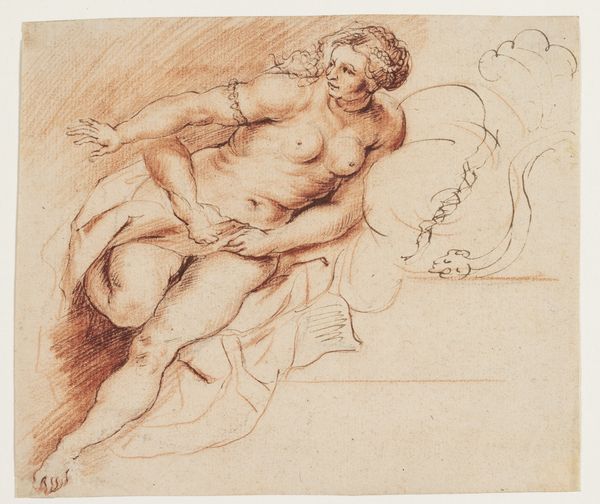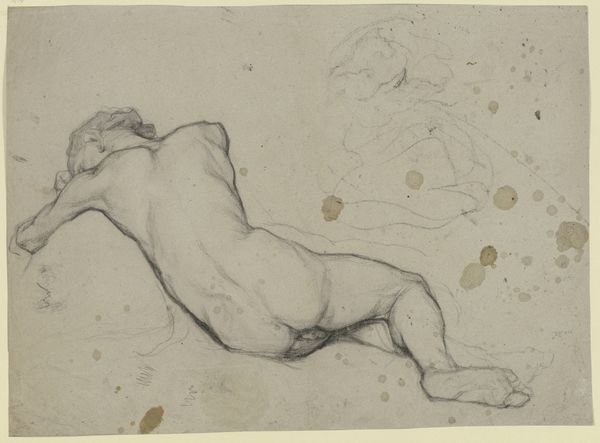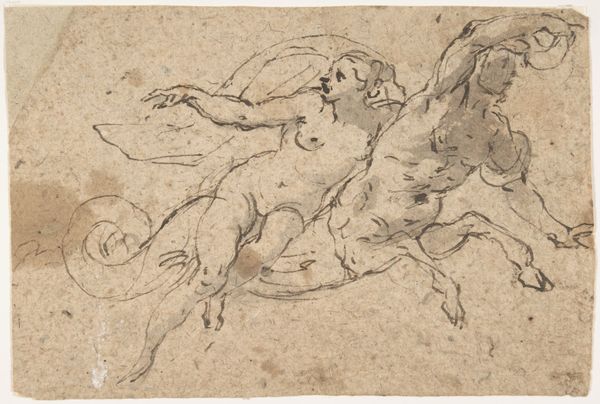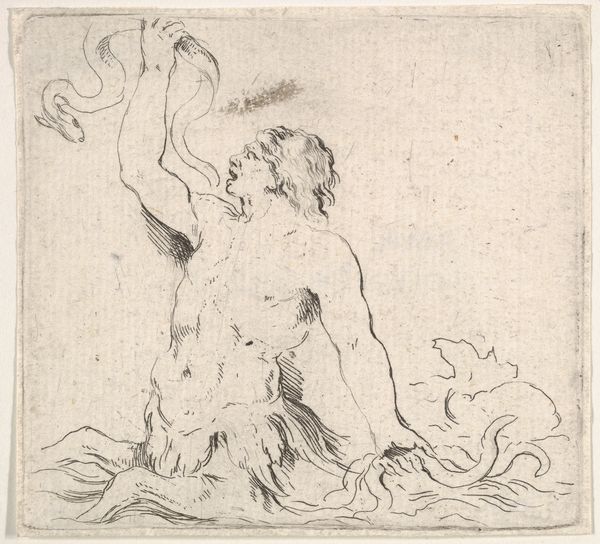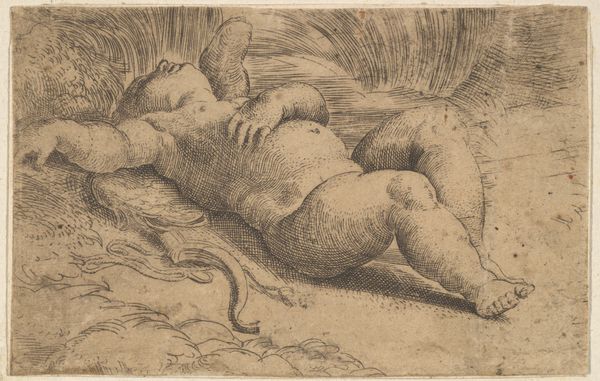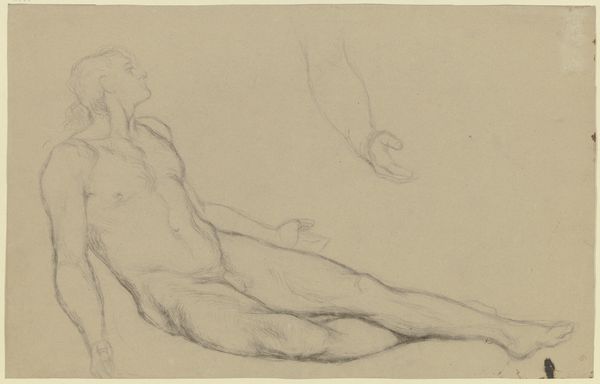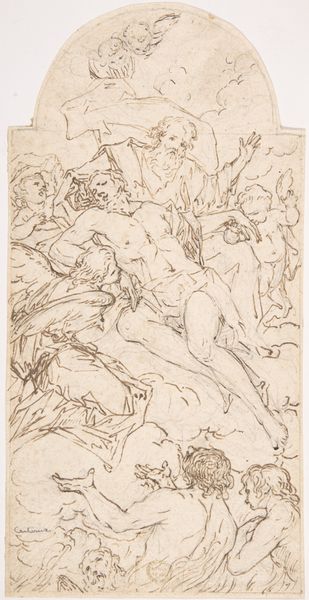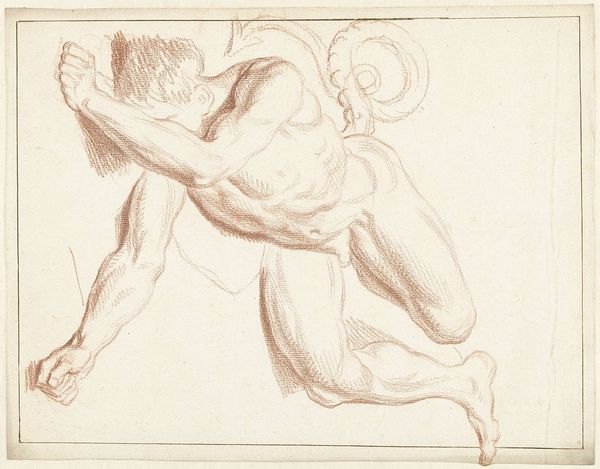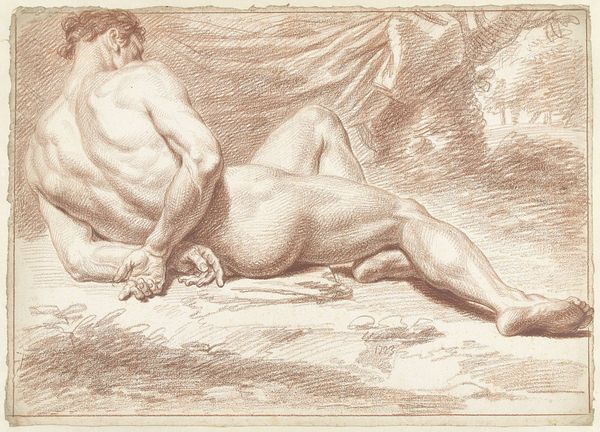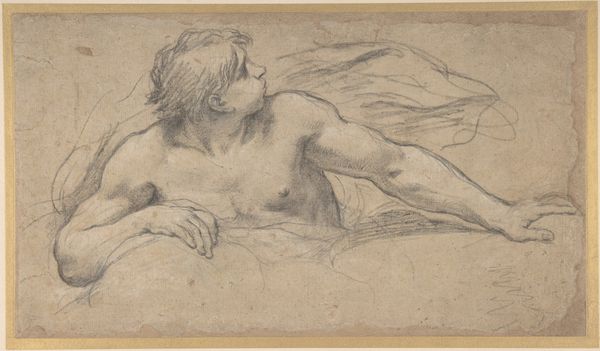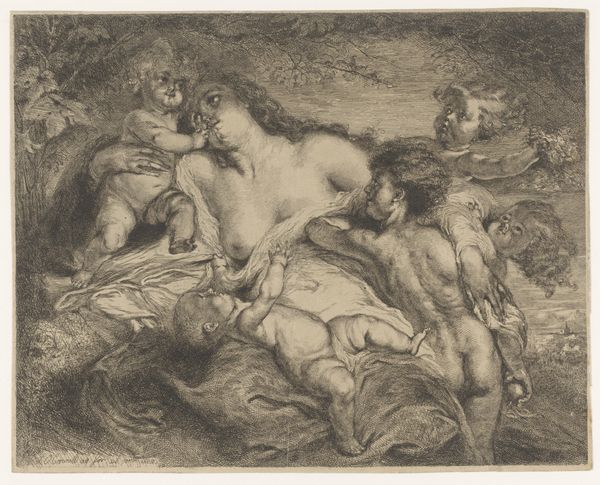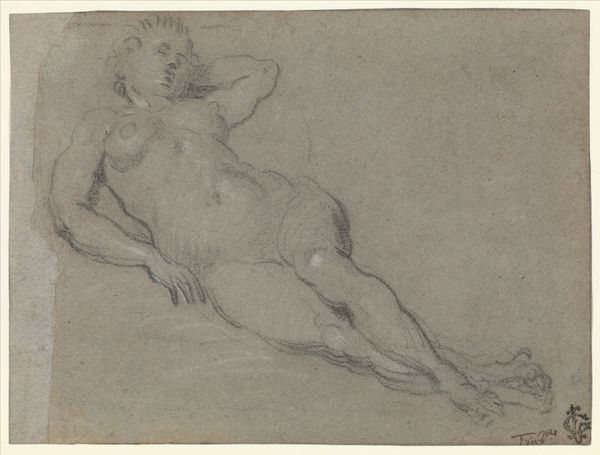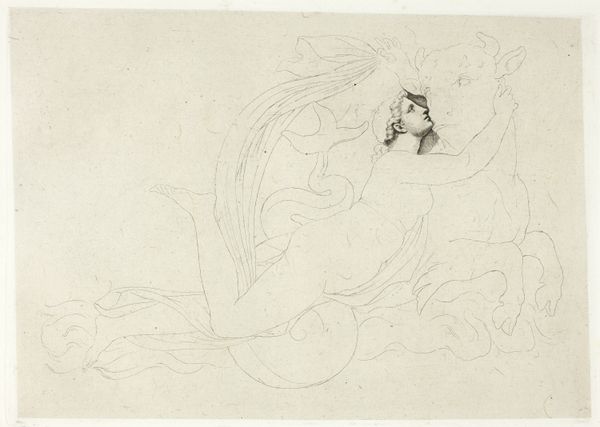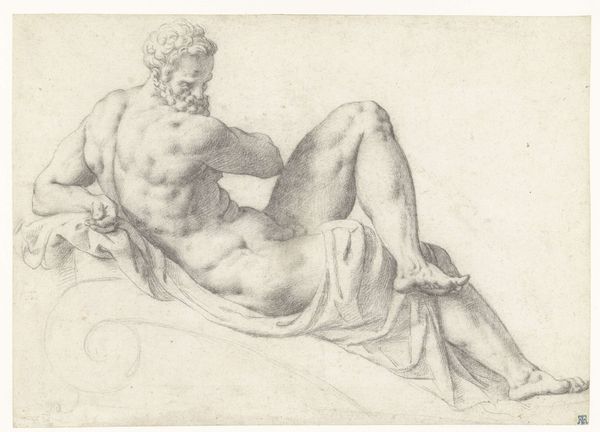
drawing, print, paper, pencil, chalk
#
portrait
#
pencil drawn
#
drawing
#
baroque
# print
#
charcoal drawing
#
figuration
#
paper
#
pencil drawing
#
pencil
#
chalk
#
portrait drawing
#
history-painting
Dimensions: 282 × 412 mm
Copyright: Public Domain
Curator: Here we have Domenico Maria Canuti's "Study for Bacchus or Silenus," dating from around 1664. It's currently housed here at the Art Institute of Chicago. The piece is rendered with pencil and chalk on paper. What strikes you initially? Editor: The languid pose, definitely. And the fact it’s unfinished. The musculature is so well-defined, but the face remains… undefined. It's both powerful and vulnerable at once. It feels like a fleeting glimpse into something monumental. Curator: Indeed. It's very likely a preparatory sketch. Canuti was a prominent figure in Bolognese Baroque painting, frequently commissioned for frescoes in palaces and churches. These types of studies were crucial in large-scale decorative programs, mapping out compositions, the flow and gestures. This sheet offers invaluable insights into his working methodology, which involves building the image block by block using diverse drawing media. Editor: Bacchus, if that's who it is, often appears wreathed in vines and holding a goblet of wine. Here, the object in his hand could very well be a shallow cup or perhaps even a theatrical mask. The theatrical interpretation would suggest not just revelry but role-playing. And of course Bacchus himself becomes associated to drama due to the ecstatic mood linked to the god's festivities. Curator: Interesting point! Silenus, the wise, drunken companion of Bacchus, might be considered instead because of that incompleteness—it leaves some ambiguity. These figures weren’t just decorative; they served ideological roles. In palaces they suggested patrons with power, of refined education. To master passions was an expression of authority. These mythical beings could also convey morality. The point here is: this artwork operated within systems of power, systems that artists had to carefully learn to master to succeed. Editor: And the ambiguity feeds into that, doesn't it? He is there, reclined, as if about to pass the torch of…something: pleasure, perhaps wisdom. The unfinished state allows for infinite interpretation and gives a rare peek at how the great Canuti's creativity sparkled on paper. Curator: Yes, seeing such preparatory drawings allow us now to piece together fragments of how this artistry served and also navigated the socio-political underpinnings of 17th century society. Editor: I leave seeing in his languidness something not dissolute but full, and ready for future blossoming.
Comments
No comments
Be the first to comment and join the conversation on the ultimate creative platform.
